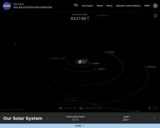
Explore the celestial objects of our Solar System (planets, comets, spacecrafts, etc...) using this interactive website.
- Subject:
- Science
- Material Type:
- Simulation
- Author:
- NASA
- Date Added:
- 02/08/2022

Explore the celestial objects of our Solar System (planets, comets, spacecrafts, etc...) using this interactive website.
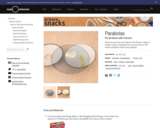
In this activity about light and reflection, learners use a special device called a Mirage Maker䋢 to create an illusion. What they perceive as an object is really an image in space, created by two concave mirrors. Learners will be surprised when they try to grab the object on the mirror and there's nothing there! Activity includes a light-ray diagram to help explain how the image is created.

Middle school lab activity promoting physics and math learning.

Play with one or two pendulums and discover how the period of a simple pendulum depends on the length of the string, the mass of the pendulum bob, and the amplitude of the swing. It's easy to measure the period using the photogate timer. You can vary friction and the strength of gravity. Use the pendulum to find the value of g on planet X. Notice the anharmonic behavior at large amplitude.
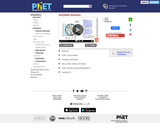
How do strong and weak acids differ? Use lab tools on your computer to find out! Dip the paper or the probe into solution to measure the pH, or put in the electrodes to measure the conductivity. Then see how concentration and strength affect pH. Can a weak acid solution have the same pH as a strong acid solution?

How do you know if a chemical equation is balanced? What can you change to balance an equation? Play a game to test your ideas!
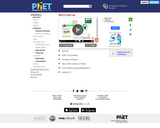
ÒThe thicker the glass, the darker the brew, the less the light that passes through.Ó Make colorful concentrated and dilute solutions and explore how much light they absorb and transmit using a virtual spectrophotometer!
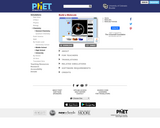
Starting from atoms, see how many molecules you can build. Collect your molecules and view them in 3D!

Watch your solution change color as you mix chemicals with water. Then check molarity with the concentration meter. What are all the ways you can change the concentration of your solution? Switch solutes to compare different chemicals and find out how concentrated you can go before you hit saturation!

What determines the concentration of a solution? Learn about the relationships between moles, liters, and molarity by adjusting the amount of solute and solution volume. Change solutes to compare different chemical compounds in water.
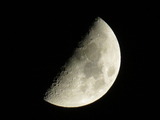
This is a lesson plan designed to teach the phases of the moon to sixth grade students. They will use IPADS to create a presentation to show their undestanding. They should be able to identify all the phases of the moon and their order. (Picture taken by my son Max)
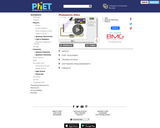
See how light knocks electrons off a metal target, and recreate the experiment that spawned the field of quantum mechanics.
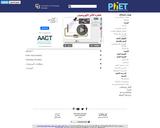
See how light knocks electrons off a metal target, and recreate the experiment that spawned the field of quantum mechanics.

Two diagrams that work together: an interactive tool to explore; and a graphic that adds depth and can be used to memorise key terms and figures.
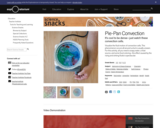
In this activity, students observe fluid motion and the formation of convection cells as a solution of soap and water is heated. This procedure can be performed as a demonstration by the teacher, or older students can conduct the experiment themselves. A list of materials, instructions, and a description of the convective process are included.
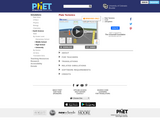
Explore how plates move on the surface of the earth. Change temperature, composition, and thickness of plates. Discover how to create new mountains, volcanoes, or oceans!
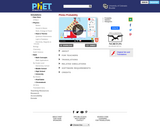
The students will play a classic game from a popular show. Through this they will see the probabilty that the ball will land each of the numbers with more accurate results coming from repeated testing.
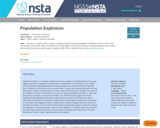
Population Explosion is a computer simulation which allows students to manipulate factors to see what happens over time to a population of sheep within an enclosed field. As the simulation runs, a graph shows the dynamic relationship between the sheep population size and their primary food resource, grass. Students can control factors such as initial number of sheep, grass regrowth rate, gain from food, and birthrate. Predation is represented by a reaper button which may also be controlled. The speed of the simulation can be set so that students can see more clearly what happens over time, or collect data more quickly, depending on how fast the simulation runs. Directions and a suggested simulation sequence are provided along with prompts so that students can pause and consider their results. A space within the simulation is provided for students to record observations and answers to the prompts. For each step in this suggested sequence, students take a snapshot of graphs they have created and store them in an album. At the end of the activity analysis questions help students connect the activity to wild populations. An optional extension exercise is also suggested.

Blast a Buick out of a cannon! Learn about projectile motion by firing various objects. Set the angle, initial speed, and mass. Add air resistance. Make a game out of this simulation by trying to hit a target.
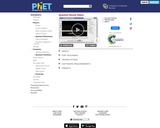
Explore the properties of quantum "particles" bound in potential wells. See how the wave functions and probability densities that describe them evolve (or don't evolve) over time.